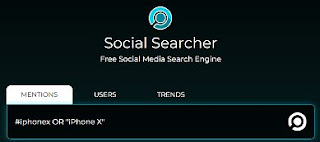Secure Your Website htaccess Security Tips
If the website is hosted on an Apache server, there is a powerful mechanism available to help mitigating attacks: the Apache .htaccess file. Properly configured, the .htaccess file on a server with mod_rewrite enabled can provide a robust defense against many HTTP Request attacks.Apache web servers has a great way to manipulate information using .htaccess files. .htaccess (hypertext access) is the default name of a directory-level configuration file that allows for decentralized management of web server configuration. The .htaccess file is placed inside the web tree, and is able to override a subset of the server’s global configuration; the extent of this subset is defined by the web server administrator. The original purpose of .htaccess was to allow per-directory access control (e.g. requiring a password to access the content), hence the name. Nowadays .htaccess can override many other configuration settings, mostly related to content control, e.g. content type and character set, CGI handlers, etc. Following are few very useful htaccess tricks.
When you have a website, you need to deal with and protect yourself from common attacks such as Cross-Site Scripting, Local File Inclusion and SQL Injection which all start with transmission of hostile commands via the HTTP Request. The challenge consists of separating legitimate requests from the hostile or malicious ones.
1. Custom Directory Index Files
DirectoryIndex index.html index.php index.htm
2. Custom Error Pages
ErrorDocument 404 errors/404.html
ErrorDocument 404 /psych/cgi-bin/error/error?404
3. Control access at files & directory level
.htaccess is most often used to restrict or deny access to individual files and folders. A typical example would be an “includes” folder. Your site’s pages can call these included scripts all they like, but you don’t want users accessing these files directly, over the web. In that case you would drop an .htaccess file in the includes folder with content something like this.# no one gets in here!
deny from all
# no nasty crackers in here!
order deny,allow
deny from all
allow from 192.168.0.0/24
# this would do the same thing..
#allow from 192.168.0
# someone else giving the ruskies a bad name..
order allow,deny
deny from 83.222.23.219
allow from all
4. Modifying the Environment Variable
Environment variables contain information used by server-side includes and CGI. Set / Unset environment variables using SetEnv and UnSetEnv.SetEnv SITE_WEBMASTER "Jack Sprat"
SetEnv SITE_WEBMASTER_URI mailto:[email protected]
UnSetEnv REMOTE_ADDR
5. 301 Redirect using htaccess
If you want to redirect from an old document to new:Redirect 301 /old/file.html http://yourdomain.com/new/file.html
RedirectMatch 301 /blog(.*) http://yourdomain.com/$1
6. Implementing a Caching Scheme with .htaccess
Cache the static files and improve your website’s performance. )# year
<FilesMatch "\.(ico|pdf|flv|jpg|jpeg|png|gif|swf|mp3|mp4)$">
Header set Cache-Control "public"
Header set Expires "Thu, 15 Apr 2010 20:00:00 GMT"
Header unset Last-Modified
</FilesMatch>
#2 hours
<FilesMatch "\.(html|htm|xml|txt|xsl)$">
Header set Cache-Control "max-age=7200, must-revalidate"
</FilesMatch>
<FilesMatch "\.(js|css)$">
SetOutputFilter DEFLATE
Header set Expires "Thu, 15 Apr 2010 20:00:00 GMT"
</FilesMatch>
7. Compress output using GZIP
Add following snippet into your htaccess file and compress all the css, js, html files with GZip compression.<IfModule mod_gzip.c>
mod_gzip_on Yes
mod_gzip_dechunk Yes
mod_gzip_item_include file \.(html?|txt|css|js|php|pl)$
mod_gzip_item_include handler ^cgi-script$
mod_gzip_item_include mime ^text/.*
mod_gzip_item_include mime ^application/x-javascript.*
mod_gzip_item_exclude mime ^image/.*
mod_gzip_item_exclude rspheader ^Content-Encoding:.*gzip.*
</IfModule>
<Location>
SetOutputFilter DEFLATE
SetEnvIfNoCase Request_URI \
\.(?:gif|jpe?g|png)$ no-gzip dont-vary
SetEnvIfNoCase Request_URI \
\.(?:exe|t?gz|zip|gz2|sit|rar)$ no-gzip dont-vary
</Location>
<FilesMatch "\.(txt|html|htm|php)">
php_value output_handler ob_gzhandler
</FilesMatch>
8. Redirect browser to https (ssl)
Add following snippet to your htaccess and redirect entire website to https.RewriteEngine On
RewriteCond %{HTTPS} !on
RewriteRule (.*) https://%{HTTP_HOST}%{REQUEST_URI}
9. Rewrite URLs using htacccess
Rewriting product.php?id=12 to product-12.htmlRewriteEngine on
RewriteRule ^product-([0-9]+)\.html$ product.php?id=$1
RewriteEngine on
RewriteRule ^product/([a-zA-Z0-9_-]+)/([0-9]+)\.html$ product.php?id=$2
RewriteEngine On
RewriteCond %{HTTP_HOST} ^aizberg\.net$
RewriteRule (.*) http://www.aizberg.net/$1 [R=301,L]
RewriteEngine On
RewriteRule ^([a-zA-Z0-9_-]+)$ user.php?username=$1
RewriteRule ^([a-zA-Z0-9_-]+)/$ user.php?username=$1
RewriteEngine On
RewriteCond %{HTTP_HOST} ^test\.com$ [OR]
RewriteCond %{HTTP_HOST} ^www\.test\.com$
RewriteCond %{REQUEST_URI} !^/new/
RewriteRule (.*) /new/$1
10. Prevent Directory Listing
Add any of the following snippet to avoid directory listing.Options -Indexes
IndexIgnore *
11. Adding new MIME types
The type of file depends on the filename extension. Unrecognized file extensions are treated as text data, and corrupted on download.AddType application/x-endnote-connection enz
AddType application/x-endnote-filter enf
AddType application/x-spss-savefile sav
12. Deny access to static file data
Denies any request for static files (images, css, etc) if referrer is not local site or empty.RewriteCond %{HTTP_REFERER} !^$
RewriteCond %{REQUEST_URI} !^/(wp-login.php|wp-admin/|wp-content/plugins/|wp-includes/).* [NC]
RewriteCond %{HTTP_REFERER} !^http://www.askapache.com.*$ [NC]
RewriteRule \.(ico|pdf|flv|jpg|jpeg|mp3|mpg|mp4|mov|wav|wmv|png|gif|swf|css|js)$ - [F,NS,L]
13. Specify Upload file limit for PHP in htaccess
php_value upload_max_filesize 20M
php_value post_max_size 20M
php_value max_execution_time 200
php_value max_input_time 200
14. Disallow Script Execution
Options -ExecCGI
AddHandler cgi-script .php .pl .py .jsp .asp .htm .shtml .sh .cgi
15. Change Charset and Language headers
AddDefaultCharset UTF-8
DefaultLanguage en-US
16. Set Timezone of the Server (GMT)
SetEnv TZ America/Indianapolis
17. Force “File Save As” Prompt
AddType application/octet-stream .avi .mpg .mov .pdf .xls .mp4
18. Protecting a single file
Normally .htaccess applies to the entire directory. With the<Files quiz.html>
order deny,allow
deny from all
AuthType Basic
AuthName "Characterology Student Authcate"
AuthLDAP on
AuthLDAPServer ldap://directory.characterology.com/
AuthLDAPBase "ou=Student, o=Characterology University, c=au"
require valid-user
satisfy any
</Files>
19. Set Cookie using htaccess
Set Cookie with environment variableHeader set Set-Cookie "language=%{lang}e; path=/;" env=lang
RewriteEngine On
RewriteBase /
RewriteRule ^(.*)(de|es|fr|it|ja|ru|en)/$ - [co=lang:$2:.yourserver.com:7200:/]
20. Send Custom Headers
Header set P3P "policyref=\"http://www.askapache.com/w3c/p3p.xml\""
Header set X-Pingback "http://www.askapache.com/xmlrpc.php"
Header set Content-Language "en-US"
Header set Vary "Accept-Encoding"
21. Blocking request based on User-Agent Header
SetEnvIfNoCase ^User-Agent$ .*(craftbot|download|extract|stripper|sucker|ninja|clshttp|webspider|leacher|collector|grabber|webpictures) HTTP_SAFE_BADBOT
SetEnvIfNoCase ^User-Agent$ .*(libwww-perl|aesop_com_spiderman) HTTP_SAFE_BADBOT
Deny from env=HTTP_SAFE_BADBOT

